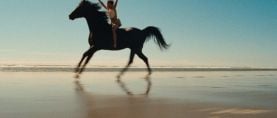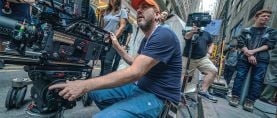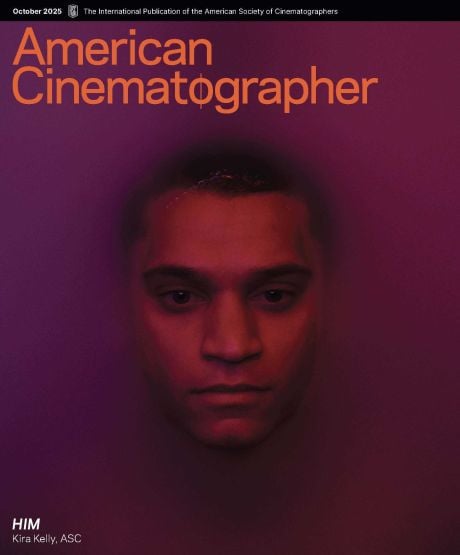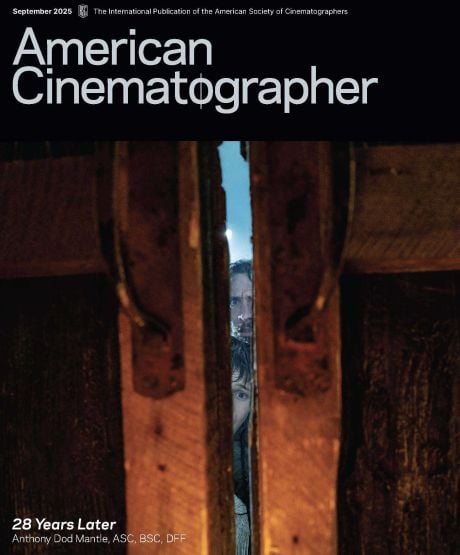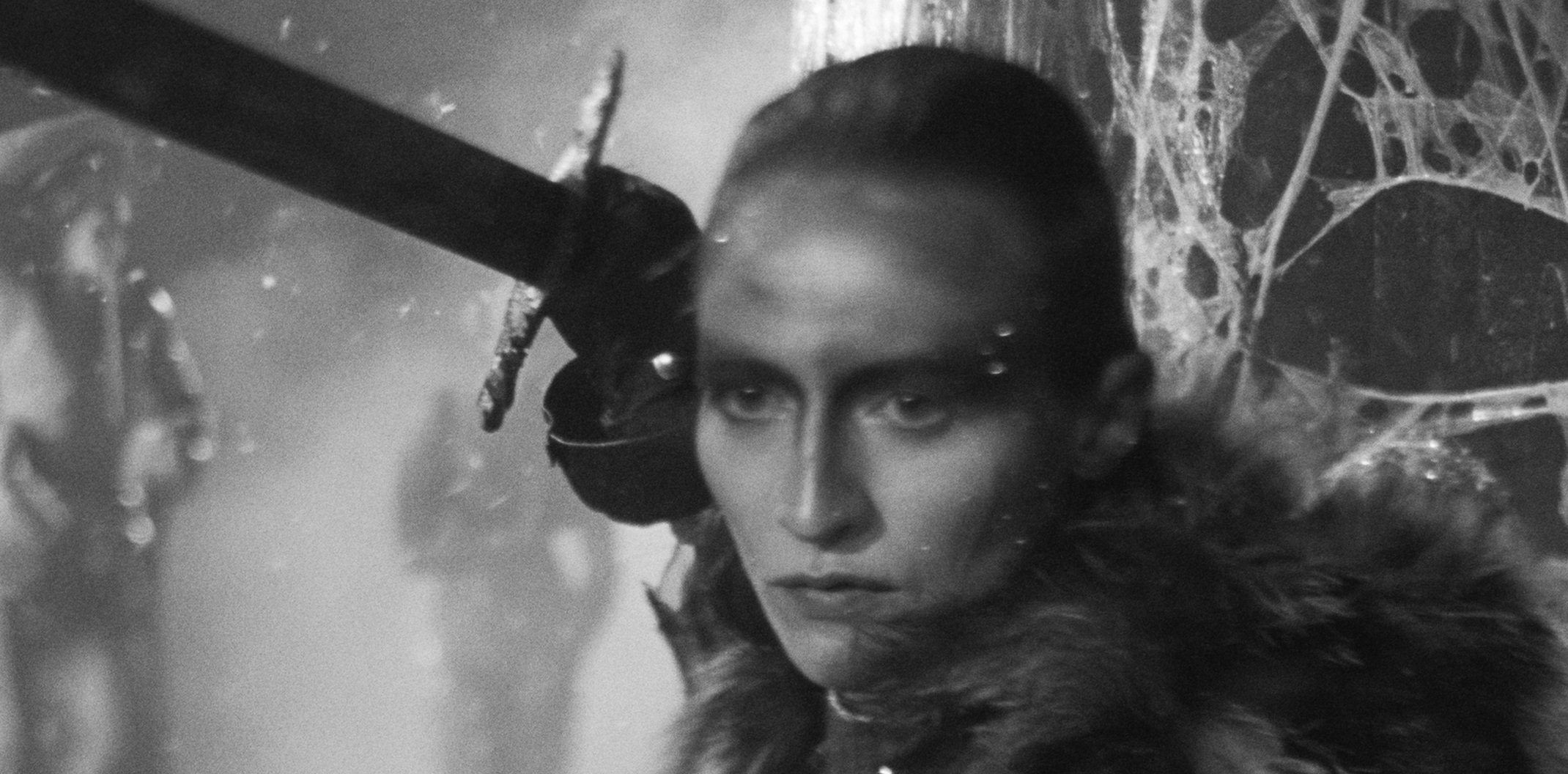
Adding Bits of Magic: Filming She Is Conann
Cinematographer Nicolas Eveilleau steps up for director Bertrand Mandico's radical reimagining of the legendary warrior.
The Conan fans who come to director Bertrand Mandico’s She is Conann expecting the tropes of author Robert E. Howard’s original pulp novels or references to director John Milius’ iconic 1982 film adaptation with Arnold Schwarzenegger in the title role will get their shocking violence with a dash of the unexpected in the genre- and gender-defying vein of Mandico’s previous features, including The Wild Boys (2015) and After Blue (2017).
“I kept the original trauma of the killed mother and the idea of revenge of the barbarian slave,” Mandico remarks in the production notes from the film’s 2023 premiere in the Cannes Film Festival’s Directors’ Fortnight. “As I did my research, I was able to go back to the original Conann from Celtic mythology. He is a conqueror character who lived with fantastic creatures called fomoires, described as demons with dog or hyena heads. I already had in my notes a demon with a dog’s head, and the correspondence reinforced my choice of a total re-appropriation — a polymorphic Conann.”
The demon dog in question is Rainer (played by Elina Löwensohn) who recounts the six lives of a barbarian warrior (portrayed by six different actresses) perpetually put to death by her future self.
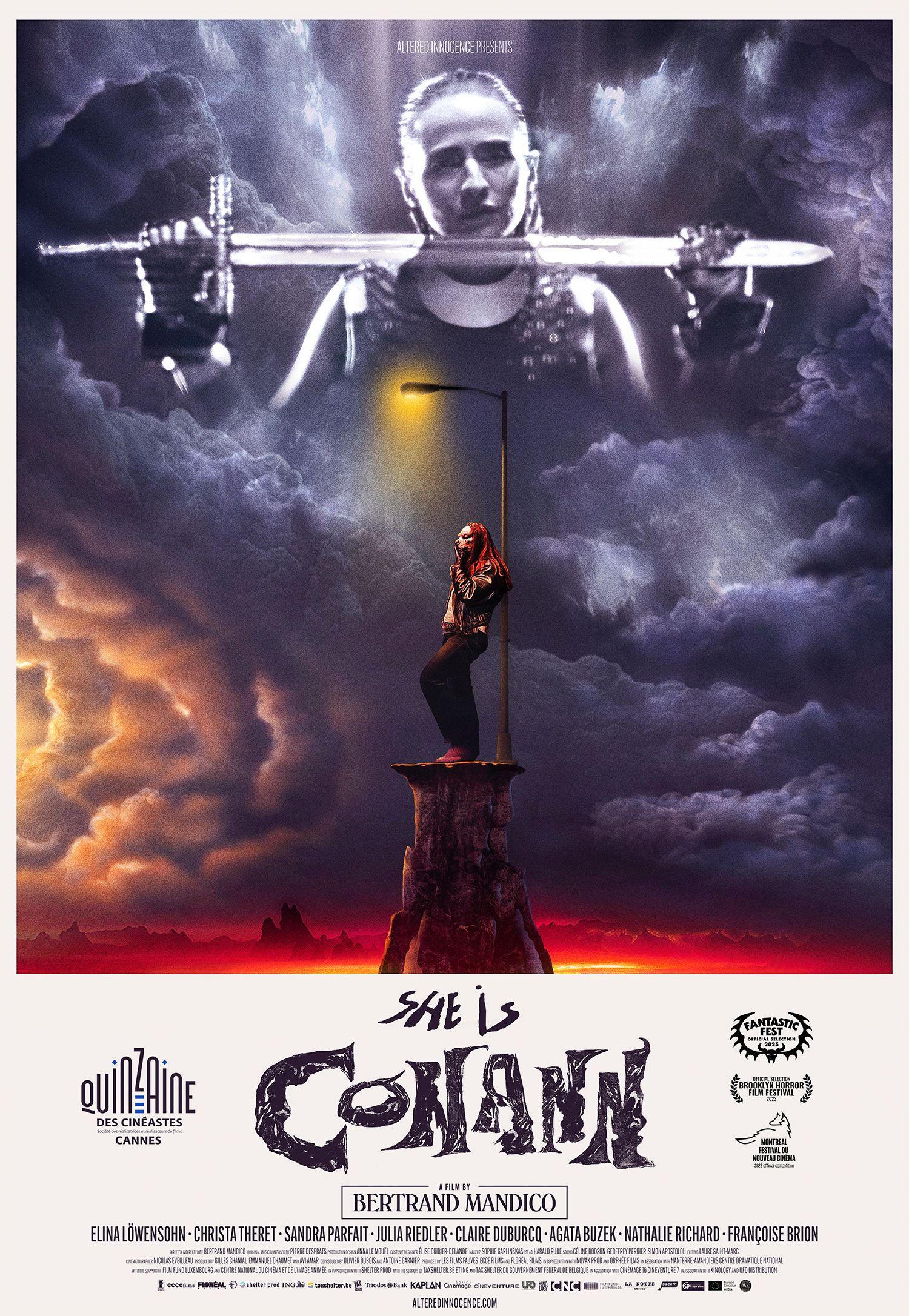
Behind the camera, cinematographer Nicolas Eveilleau steps up from his work as a first assistant on The Wild Boys and After Blue, both photographed by Pascale Granel. “One of the things about Bertrand’s directing style is that he operates the camera, so when I’m pulling focus, I’m very close to him and I have to understand what he will do or what he will ask from the actresses,” Eveilleau tells AC. “This kind of trust is important.”

There are four films in Mandico’s Conann cycle, which was originally conceived as a live stage show called The Deviant Comedy. When COVID caused a halt in live theatre productions, Mandico had the show filmed on 16mm by cinematographer Sylvain Verdet.
“I was first AC on that also, and Bertrand knew I wanted to move up,” says Eveilleau. “When Sylvain, because of production stuff that changed, wasn’t available for the next film, Rainer [a Vicious Dog in a Skull Valley], this became the first time that I worked with Bertrand as a DP. It was a great shoot, five days, and he was happy with the results, so I think he just trusted me to do She is Conann.”
After filming on the feature wrapped in Luxembourg, Eveilleau shot the VR short We Barbarians with the same actors, props, costumes and sets, and four new projects for Mandico.
“Like me, Nicolas is a cinephile and loves shooting film,” says the director. “I am fortunate to be well-accompanied by people who understand me and allow me to frame my films and innovate.”
“It’s about infusing emotion into the set and adding bits of magic, making the film more than just a consumable product.”
— cinematographer Nicolas Eveilleau
The making of Mandico’s short-form work — for example, Depressive Cop, Our Lady of the Hormones, Prehistoric Cabaret and Salammbo — follows a philosophy laid out in the 12-step “Incoherence Manifesto” he developed with writer/producer Katrin Olafsdottir: shoot on expired film stock, capture all effects in-camera, create sound in post, eschew aesthetic and narrative trends, etc.. While none of these philosophies were explicitly applied to The Wild Boys, After Blue or She is Conann, their influence is present.
“I love manifestos; they encapsulate a state of mind at a given moment,” Mandico says. “I also enjoy contradicting my principles and imagining new rules. Constraint is a creative engine; abandoning principles is a rejuvenating experience. However, I remain faithful to shooting film, which magnifies the image and ritualizes cinema.”
INTERVIEW
American Cinematographer: In your experience, how do Bertrand’s “incoherent” philosophies find their way into his feature films?
Nicolas Eveilleau: It’s just inherent in everything he does. For instance, the rule on using expired film stock doesn’t apply, because using expired film stock for a feature might be impractical due to its scarcity, so we use regular, new stock from Kodak. Bertrand’s philosophy of shooting, though, is deeply rooted in these guiding principles. It’s about creating a sacred space around the filmmaking process. It’s about infusing emotion into the set and adding bits of magic, making the film more than just a consumable product.
I was going to say “framework,” but I like your phrase, “the sacred space.”
It’s how I interpret it, even though he never explicitly referred to the film in that way.
Let’s talk about the nature of your relationship as the cinematographer with Bertrand as the author of the film.
Yeah, this line is crucial. Bertrand doesn’t like to theorize much; it’s more about instinct. In prep, he sends around 200 pictures for costumes, set design, lighting, and the general feel he envisions. It’s a holistic approach to represent the film’s universe. Each of his features has its own distinct universe, like The Wild Boys and After Blue. He trusts me to grasp his vision, and I trust him when he suggests something that might initially be unclear. It’s challenging at times, but that trust is what makes it work.
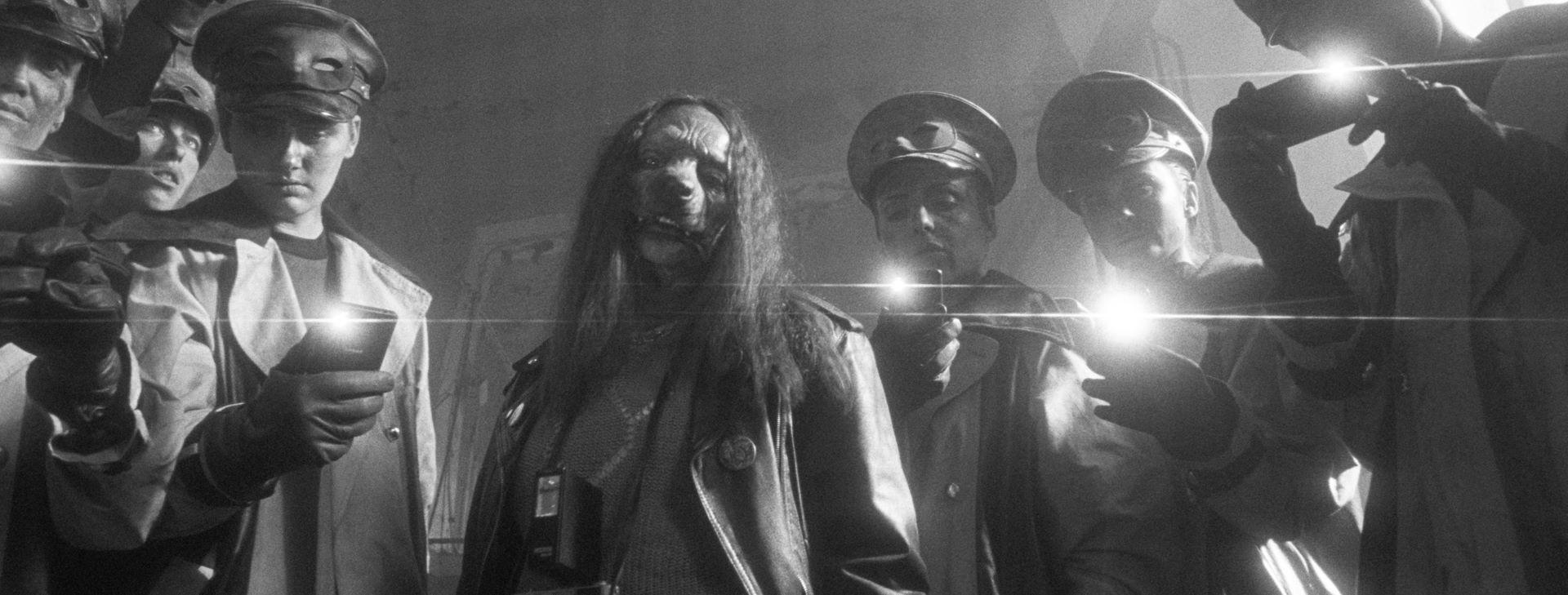
As far as his authorship goes, though, in terms of cinematography, does he have input on or make decisions about lenses, lighting or filtration?
Usually, we make them together. For lenses, he doesn’t really care about specifics, like if the lenses are Zeiss or Cooke. He always wants to work with zoom lenses because it gives him more freedom to operate the camera. He anticipates the editing in his mind, which comes from his animation studies — at Le Gobelins in Paris — where you have to imagine everything beforehand. So even if it’s not perfectly planned, he has enough instinct to know what he needs.
Regarding lighting, on She is Conann, I initially thought he would have more input on lighting. I proposed ideas, and often after shooting a sequence, I would ask him if the lighting was okay, and he was always fine with it. Sometimes he wanted specific elements, like a shiny background or more lights in a certain area. Special effects, like the stroboscope, were discussed together, but overall, he often went with what I proposed.
Do you remember which zoom lens you used?
Angénieux Optimos, the 15-40mm and the 45-120mm because the small lenses are easier to move, and we always planned to go handheld, even if there isn’t any handheld in She is Conann, but you never know because sometimes Bertrand will say, “Okay, let's go!”
How do you anticipate what he wants?
I think cinematography boils down to reading a script and getting a feel for each sequence. What’s amazing with Bertrand is that you don’t concern yourself with reality. If something feels too real, or evoke the desired emotion, it doesn’t interest him. His cinematography must be bigger than life. You focus more on the feeling that you want to convey in each sequence — violence, drama, menace, energy, etc. That’s what interests me, too.
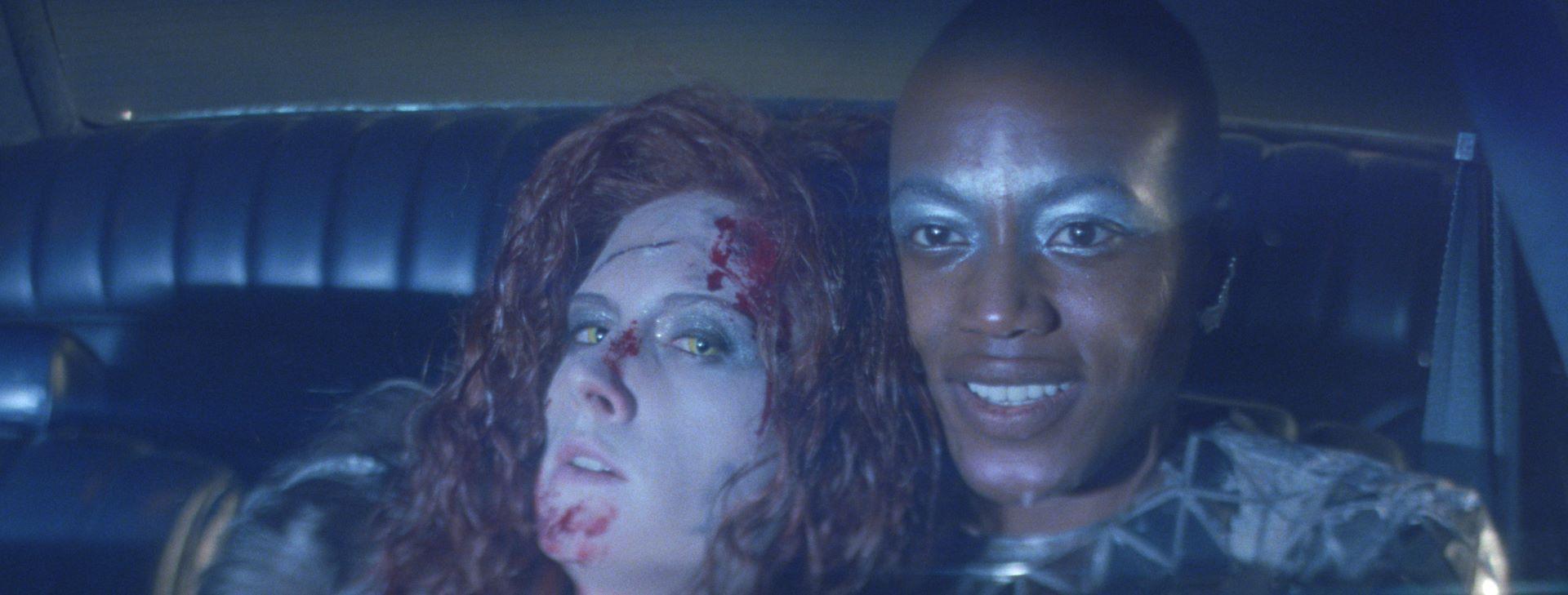
Talk about your collaboration with production designer Anna Le Mouël.
Anna was involved in the project before me — she worked on the live show and reused a lot of those elements for She is Conann. We collaborated on the basics: lighting, neon signs, and where certain walls and windows could go. We were mostly restricted by budget considerations. For instance, on the New York set, which we shot in this old steel factory, we couldn’t request a higher ceiling due to economic constraints. Bertrand’s manifesto emphasizes making the best of what you have, to push your boundaries and avoid taking the easy way out, regardless of budget or technical constraints.
Did you know in advance which scenes would be in black-and-white, and did this affect how scenes were designed or lit?
We shot everything in color and knew that most of the film would be made black-and-white — Bertrand made those decisions as we shot — so color was not a primary means of expressing emotion for me. I was more focused on intense blacks, shiny surfaces, and strong lights for the barbarian scenes. We used Kodak 5219 500T rated at 320 ASA [processed at L’Equipe in Belgium] because I wanted more detail in the black, and since its film, keeping detail in the highlights was never a problem.
Moving on to filters, special effects, optical effects in-camera, like overprints, overlays, and projections — can you discuss how these were used?
Bertrand values seeing the movie as he shoots it, so there were no postproduction special effects. For example, the screen behind the Queen of the Dead used rear projection. Filters, such as streaks, stars, and soft focus, were applied directly on set, and for some specific shots in the underworld we used Clairmont swing-and-tilt lenses.
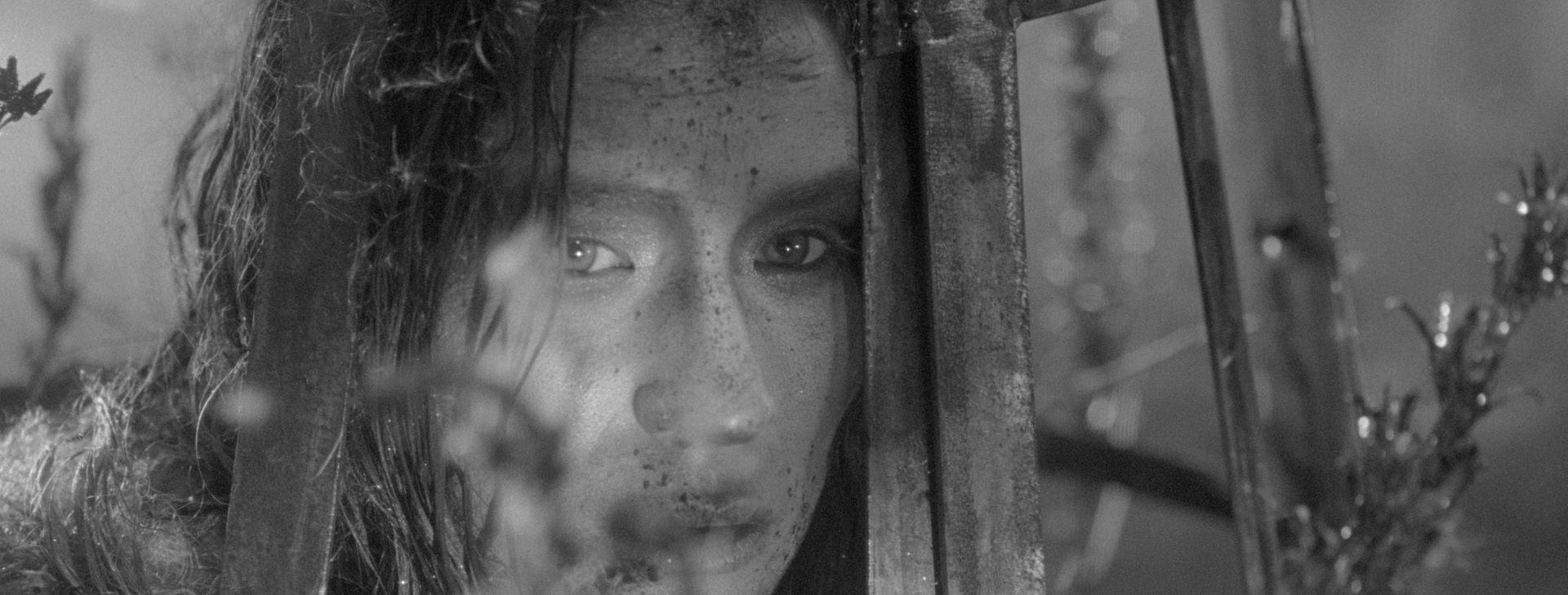
What camera did you use?
We used an Aaton Penelope, a less common choice in the States. It shot two-perf 35mm. We made the decision to record sound in postproduction, freeing up flexibility on set.
In what ways?
Shooting without sync sound sometimes allowed for flexibility in communication on set. It facilitated interactions between Bertrand and the dolly grip and the actresses, though improvisation was minimal. And we had a huge fan that was always going. We still recorded sound, mainly for editing.
Was it always assumed you would shoot 35?
We opted for 35 because it looks nicer, less grainy.
It looks fantastic, especially for two-perf. Any challenges?
No, shooting two-perf was a money-saving decision, and the ’scope format worked well with Bertrand’s vision.
Where are you while he’s at the camera shooting?
I’m beside him with a small wireless screen that allows me to know what he frames. But basically, I see a lot more with my own eyes and with the contrast glass. Also, many times I’ll have a small light source with me, either a small LED panel or Astera tube because he likes ending some sequences with the actress going to the camera, so when I hear, “Come closer,” I’ll jump in with a bit of extra light.
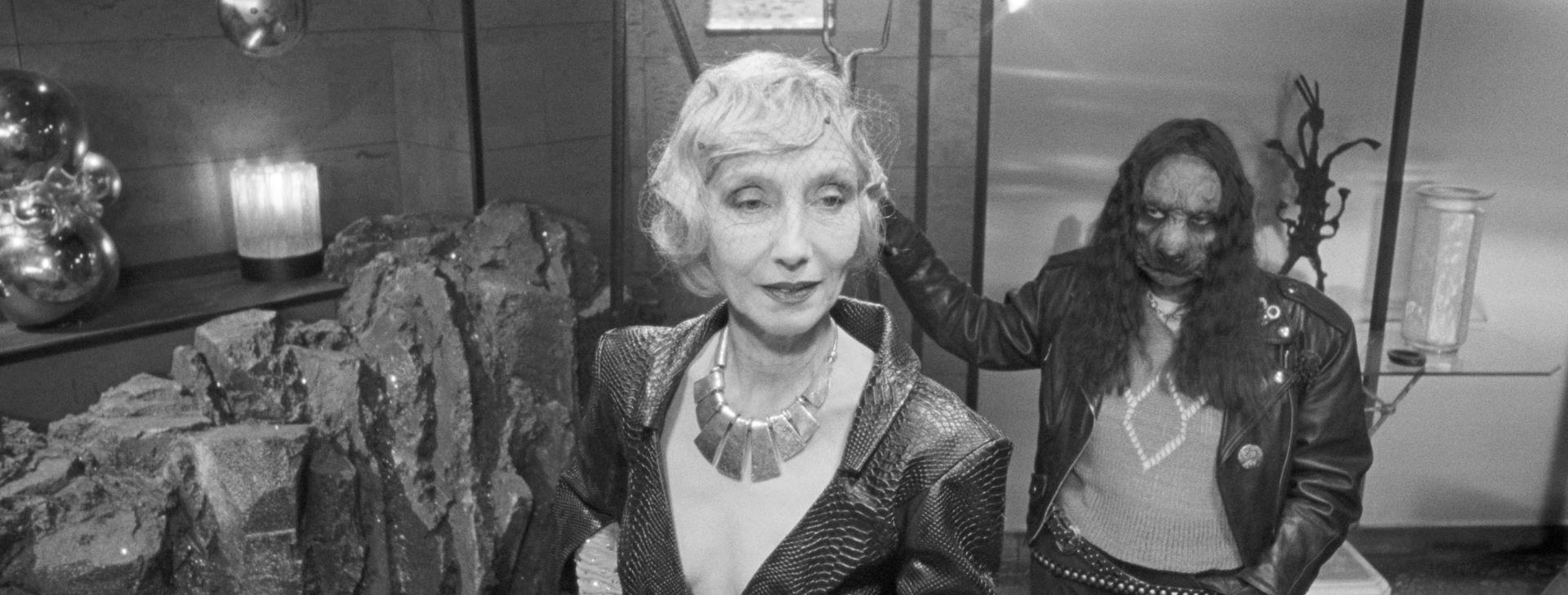
When they come close to the camera, what is he asking them to do?
Usually, he has them look into the camera as kind of a fourth wall-break, but he doesn’t always use it. It’s to call the people in the cinema, to say, “Look at this.” As I said, there’s not a lot of improvisation, because shooting with film involves more rehearsal than with digital. Bertrand will work with the actresses in rehearsal for weeks before shooting because he knows that planning leads to the best results, and we wanted to capture a true cinematic atmosphere.
Regarding She is Conann as an adaptation, if it’s not based on specific genre tropes or cliché, then what are you channeling?
Bertrand has a vast cinema and photographic culture, and his work is a blend of what he likes. For example, we had a reference to Max Ophüls’ Lola Montès for the script, mainly for the character of Rainer. Cinematographically, we drew our inspiration from fashion pictures to landscape photography. The key is to create a coherent universe within the film. It’s not about recreating but about telling the story. Bertrand wanted to emphasize the idea of barbarism, portraying the most barbaric act as killing one’s youth, and Conann can never escape her fate, making each transformation an essential part of her life. The cinematography also aims for a harsh and violent feel, reflecting the emotional violence of the story.
